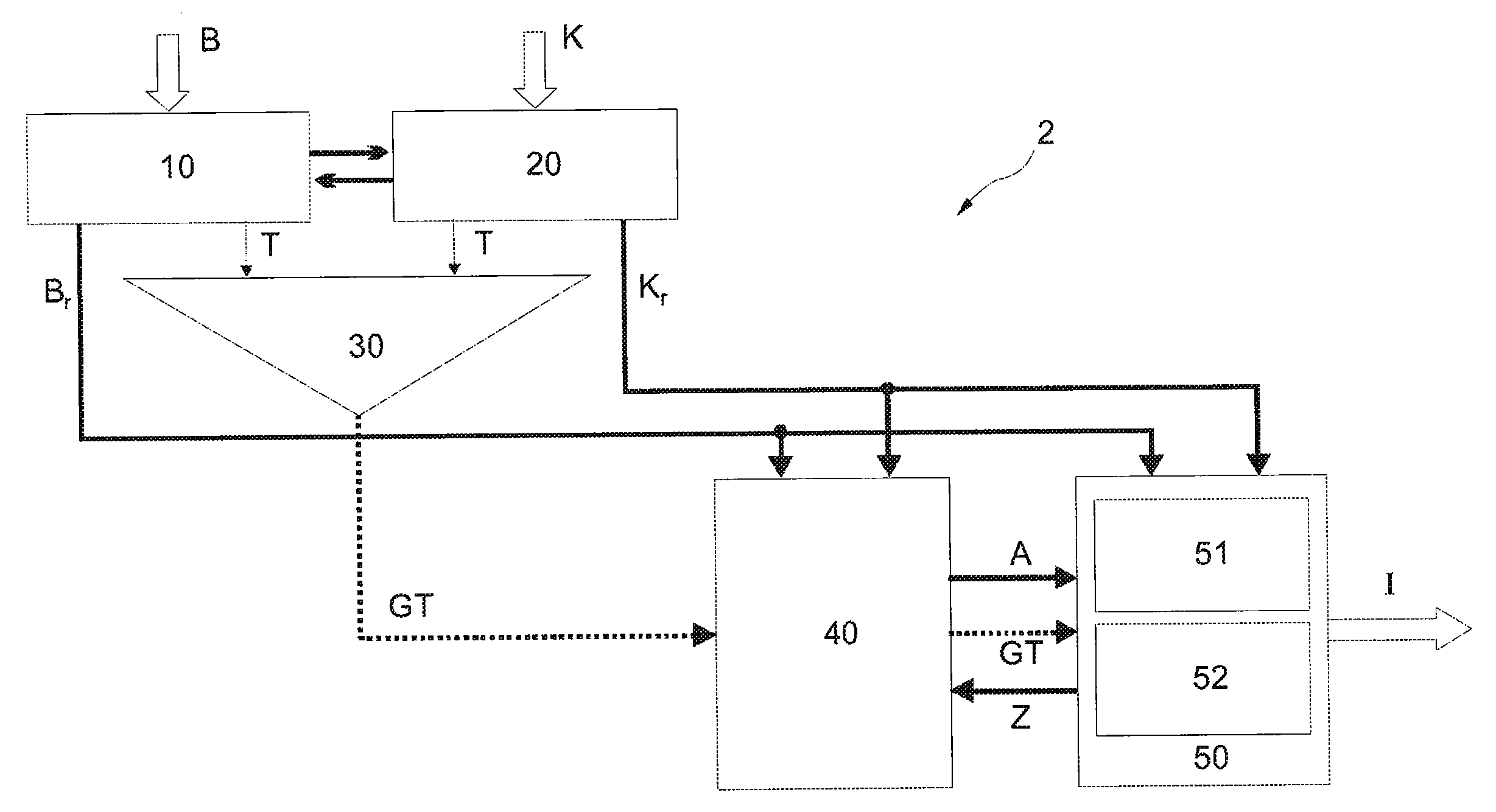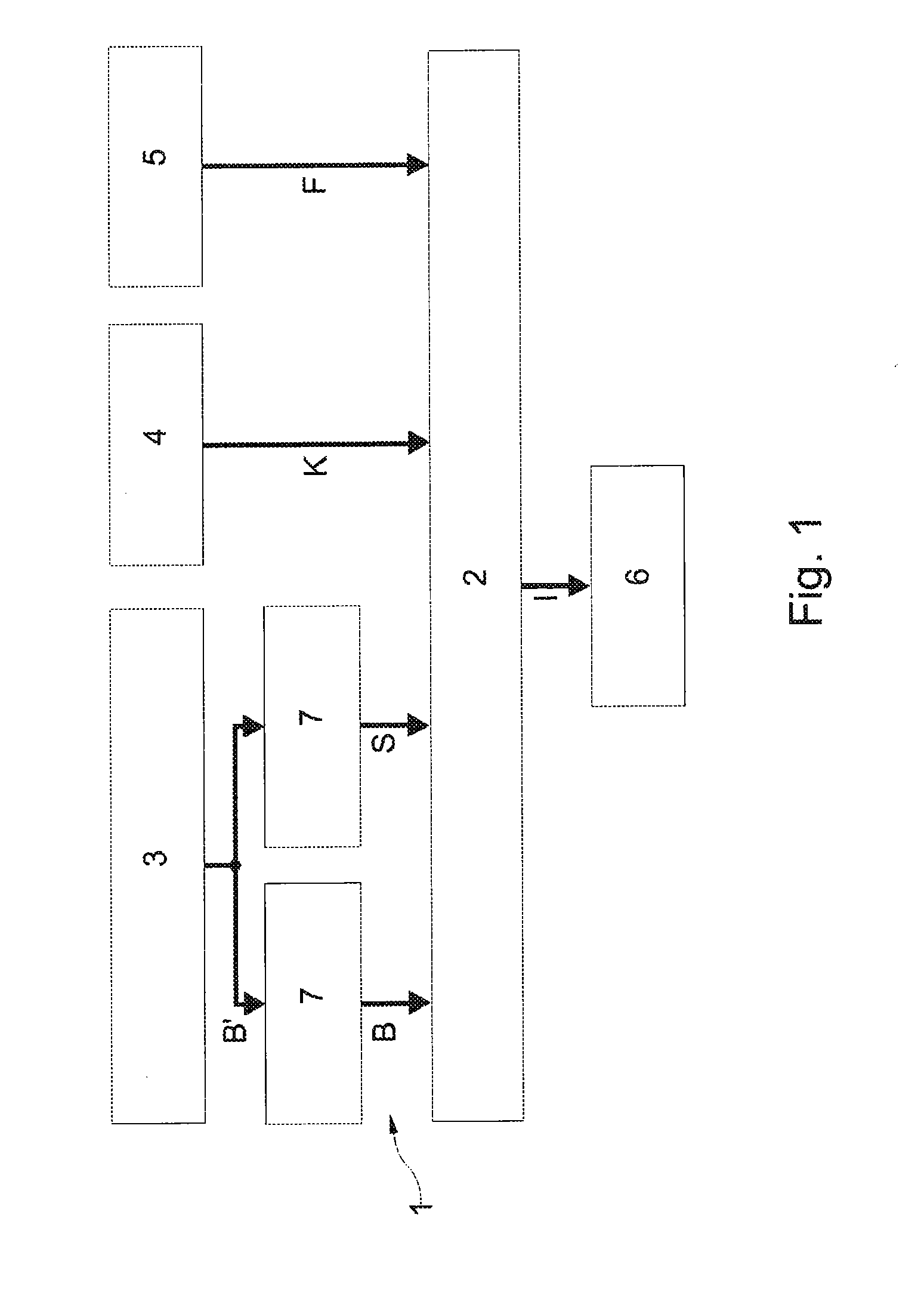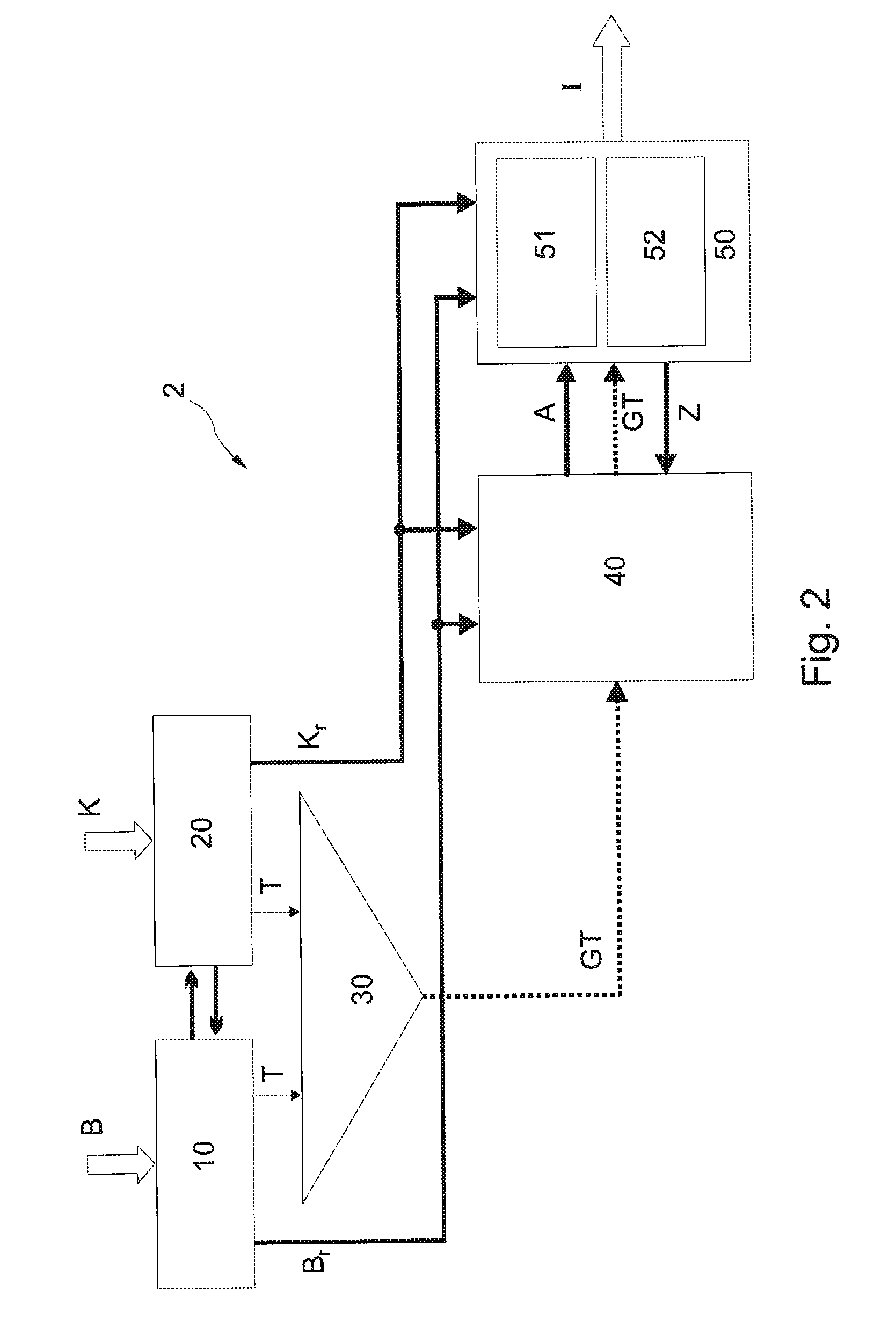Method and device for identifying traffic-relevant information
a traffic-relevant information and information technology, applied in the field of traffic-relevant information identification methods and devices, can solve the problems of inability to capture information by the navigation system described above, isolating the information of the system, and is difficult to update the user's information relative to the frequency, so as to achieve the effect of convenient replacemen
- Summary
- Abstract
- Description
- Claims
- Application Information
AI Technical Summary
Benefits of technology
Problems solved by technology
Method used
Image
Examples
first exemplary embodiment
The First Exemplary Embodiment
[0106]In the fusion module, information from a digital road map and information from camera-supported traffic sign recognition is combined in order to inform the driver regarding the permitted maximum speed. Furthermore, the current valid speed limit can be used as an initial value for the speed rule installation. Applications from the autonomous driving field are also possible.
[0107]In order to be able to issue a clear result in cases of contradictory situations from the input data, the fusion module contains a regulator. On the basis of pre-treated input data from the two information sources (visual sensors and digital map), a decision is made. For this purpose, the regulator is used (see FIG. 2).
Basic functioning: When a traffic sign or a change to a signal from the digital road map is detected, the regulator is evaluated based on the initial data of the data compaction or scene interpretation. The starting point for this regulator are the actions to...
second exemplary embodiment
Description of the Second Exemplary Embodiment
[0121]Basic functioning: On numerous road sections, such as on motorways or national roads with a similar structure to a motorway, speed limits which have been positioned in parallel (referred to below as multiple signs) are to be found. To the extent that these are clearly recognised as such, the limits which deviate from each other can be processed internally. Thus for example a parallel sign “120 without restriction” and “80 in wet conditions” could occur as a multiple sign. In most cases, these signs are attached to a post one on top of the other. Speed limits with traffic lane-related validity are not regarded as being multiple signs as is the case with a group of signs, for example. If when two speed limits with different values are detected, it cannot be clearly assumed that multiple signs are present, the fusion module makes a clear decision for a limit.
The Recognition of Multiple Signs:
[0122]Multiple signs can be recognised both...
PUM
 Login to View More
Login to View More Abstract
Description
Claims
Application Information
 Login to View More
Login to View More - Generate Ideas
- Intellectual Property
- Life Sciences
- Materials
- Tech Scout
- Unparalleled Data Quality
- Higher Quality Content
- 60% Fewer Hallucinations
Browse by: Latest US Patents, China's latest patents, Technical Efficacy Thesaurus, Application Domain, Technology Topic, Popular Technical Reports.
© 2025 PatSnap. All rights reserved.Legal|Privacy policy|Modern Slavery Act Transparency Statement|Sitemap|About US| Contact US: help@patsnap.com



